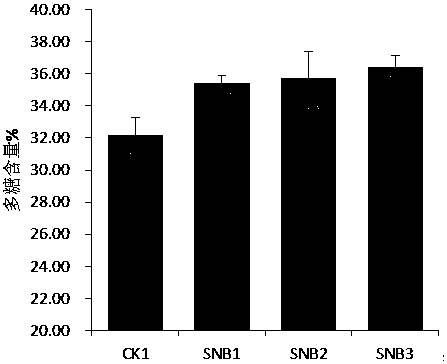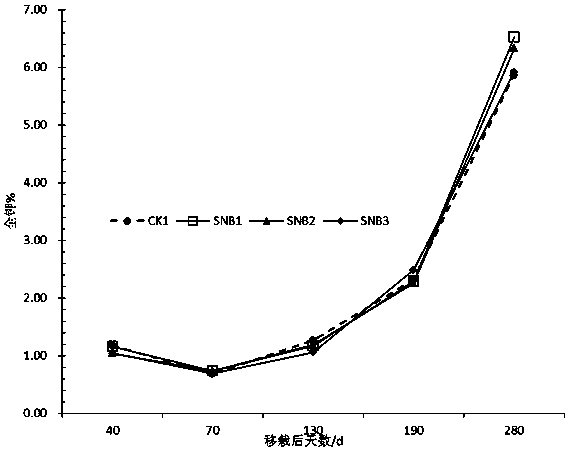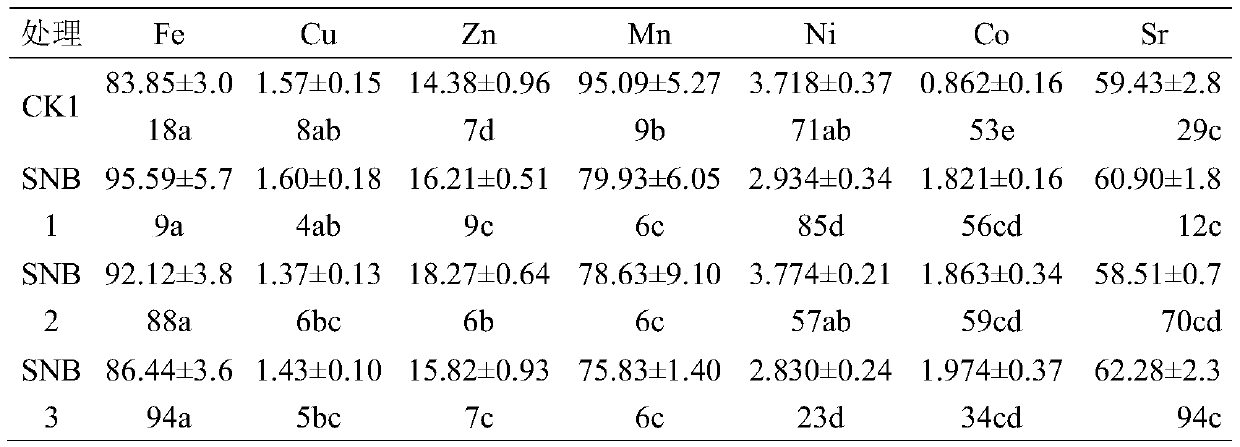A pine bark-biochar matrix for the cultivation of Dendrobium officinale
A technology of biochar matrix and Dendrobium candidum, which is applied in the direction of planting substrate, culture medium, application, etc., can solve the problems of reduced air permeability and water permeability, many toxic substances in the substrate, and shortage of peat resources, so as to improve the appearance and quality, and promote the accumulation of potassium Effect of absorbing and increasing polysaccharide content
- Summary
- Abstract
- Description
- Claims
- Application Information
AI Technical Summary
Problems solved by technology
Method used
Image
Examples
Embodiment 1
[0023] A kind of pine bark-biochar matrix that is used for the cultivation of Dendrobium candidum, is made by mixing the following components in mass percentage: pine bark (commercially available, particle diameter 12-20mm) 56%, peat 24%, biochar (grain Diameter is 2-5mm) 20%.
[0024] The biochar is prepared by mixing bamboo charcoal, bagasse charcoal and hickory shell charcoal according to the weight ratio of 1:1:3. The preparation method of the bamboo charcoal is obtained by pyrolyzing bamboo at 400° C. for 3 hours in an oxygen-free environment. The preparation method of the bagasse char is obtained by pyrolyzing the bagasse at 400° C. for 3 hours in an oxygen-free environment. The preparation method of the pecan shell charcoal is obtained by cracking pecan shells at 400° C. for 3 hours in an oxygen-free environment.
Embodiment 2
[0026] A kind of pine bark-biochar matrix that is used for the cultivation of Dendrobium officinale is made by mixing the following components in mass percentage: pine bark (commercially available, particle diameter 12-20mm) 67%, peat (commercially available) 28%, Biochar (particle size 2-5mm) 5%.
[0027] The biochar is prepared by mixing bamboo charcoal, bagasse charcoal and hickory shell charcoal according to the weight ratio of 1:1:3. The preparation method of the bamboo charcoal is obtained by pyrolyzing bamboo at 400° C. for 3 hours in an oxygen-free environment. The preparation method of the bagasse char is obtained by pyrolyzing the bagasse at 400° C. for 3 hours in an oxygen-free environment. The preparation method of the pecan shell charcoal is obtained by cracking pecan shells at 400° C. for 3 hours in an oxygen-free environment.
Embodiment 3
[0029] A kind of pine bark-biochar matrix that is used for the cultivation of Dendrobium candidum, is made by mixing the following components in mass percentage: pine bark (commercially available, particle diameter 12-20mm) 63%, peat 27%, biochar (grain Diameter is 2-5mm) 10%.
[0030] The biochar is prepared by mixing bamboo charcoal, bagasse charcoal and hickory shell charcoal according to the weight ratio of 1:1:3. The preparation method of the bamboo charcoal is obtained by pyrolyzing bamboo at 400° C. for 3 hours in an oxygen-free environment. The preparation method of the bagasse char is obtained by pyrolyzing the bagasse at 400° C. for 3 hours in an oxygen-free environment. The preparation method of the pecan shell charcoal is obtained by cracking pecan shells at 400° C. for 3 hours in an oxygen-free environment.
PUM
 Login to View More
Login to View More Abstract
Description
Claims
Application Information
 Login to View More
Login to View More - R&D
- Intellectual Property
- Life Sciences
- Materials
- Tech Scout
- Unparalleled Data Quality
- Higher Quality Content
- 60% Fewer Hallucinations
Browse by: Latest US Patents, China's latest patents, Technical Efficacy Thesaurus, Application Domain, Technology Topic, Popular Technical Reports.
© 2025 PatSnap. All rights reserved.Legal|Privacy policy|Modern Slavery Act Transparency Statement|Sitemap|About US| Contact US: help@patsnap.com



